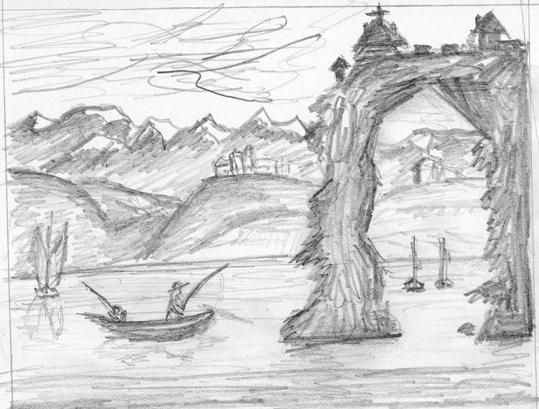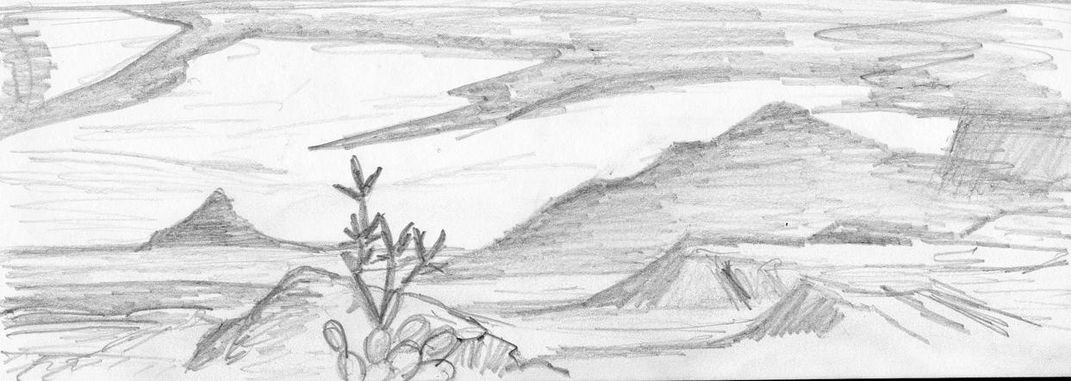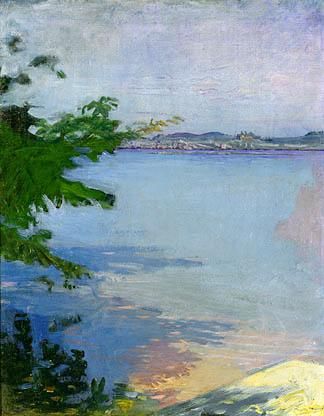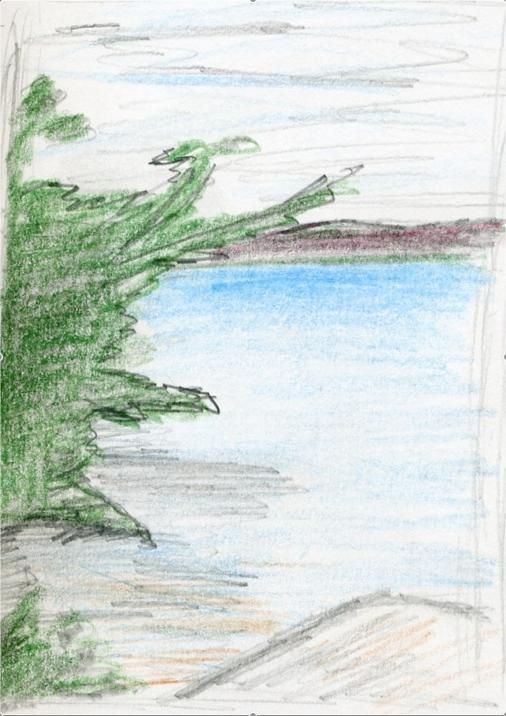I’m Not An Artist And I Don’t Play One on TV
/https://tf-cmsv2-smithsonianmag-media.s3.amazonaws.com/filer/thomas-chambers.jpg)
On Tuesday, I headed over to the weekly sketching session at the American Art Museum, figuring it would give me a chance to brush up on my drawing, something I’ve neglected in the last few years.
About a dozen gathered at the Luce Foundation Center, a three-level storage and study facility with thousands of works of art tucked away in a setting that’s part library, part art gallery.
This week’s session focused on landscapes, and opened with a huddle around a couple of aging sketchbooks by early 20th century painters brought in by Liza Kirwin, a curator at the Archives of American Art. (See some sketchbooks online here)
One was filled with quick pencil drawings by Fairfield Porter suggesting New England landscapes.
The sketches were "very preliminary and spontaneous," Kirwin explained. "He was trying to get a quick idea of what he’s seeing and maybe he will work it up into a complete painting."
That’s exactly what visitors were told to do before heading off to sketch landscapes in the collection.
"Imagine you’re using the sketches to create a finished painting. What information would you need to document?" asked Bridget Callahan, an assistant at the Luce Center. "Try to capture the entire composition."

It sounded easy enough listening to her, but with only an old No. 2 pencil bummed from a coworker and originally pilfered from Omni Hotels, I wasn’t sure how I would do. Some of the half-dozen regulars carried well-worn sketchbooks and sets of artist’s pencils.
Luckily, the group was a mixture of skill levels. Another first-timer confessed she hadn’t sketched in 24 years. And there were pencils, pastels and paper on hand.
I grabbed a stool and plopped down in front of a painting by Thomas Chambers. Its setting looked like a lake in Japan, but the artist actually painted it along the Hudson River.
I focused on the details, trying to get the curve of the dark stone arch and its feathery bushes, the boats and mountains. The rest of the world slipped away as I fell into a meditation.
But when I took a critical look at my drawing, my reverie was destroyed. The more I sketched with my Omni Hotels pencil, the more it turned into a mass of gray only hinting at the colorful painting. The ominous storm clouds were just a mass of chicken scratches. The country estates on the hill, a stack of cardboard boxes.


I moved on to a desert landscape by Tom Lea tinted with the beige and purple of the southwest, but I again ended up with gray mountains and sand. The prickly cactus turned into a pile of donuts sprouting deer antlers.
I switched to colored pencils and tried a pond in New Hampshire, but found I had less control with color. My tree morphed into a giant blob-like insect shaking its fists at the lake. It didn’t matter. I had fun.


When the 45 minutes ran out, the group shared sketches and encouragement. Sketching sessions are held most Tuesdays at the American Art Museum’s Luce Foundation Center from 3 p.m. to 4:30 p.m. Next week’s theme is body parts, which should be interesting.
(Images courtesy of the Smithsonian American Art Museum; Thomas Chambers, Landscape; Tom Lea, Southwest; Abbott Handerson Thayer, Dublin Pond)